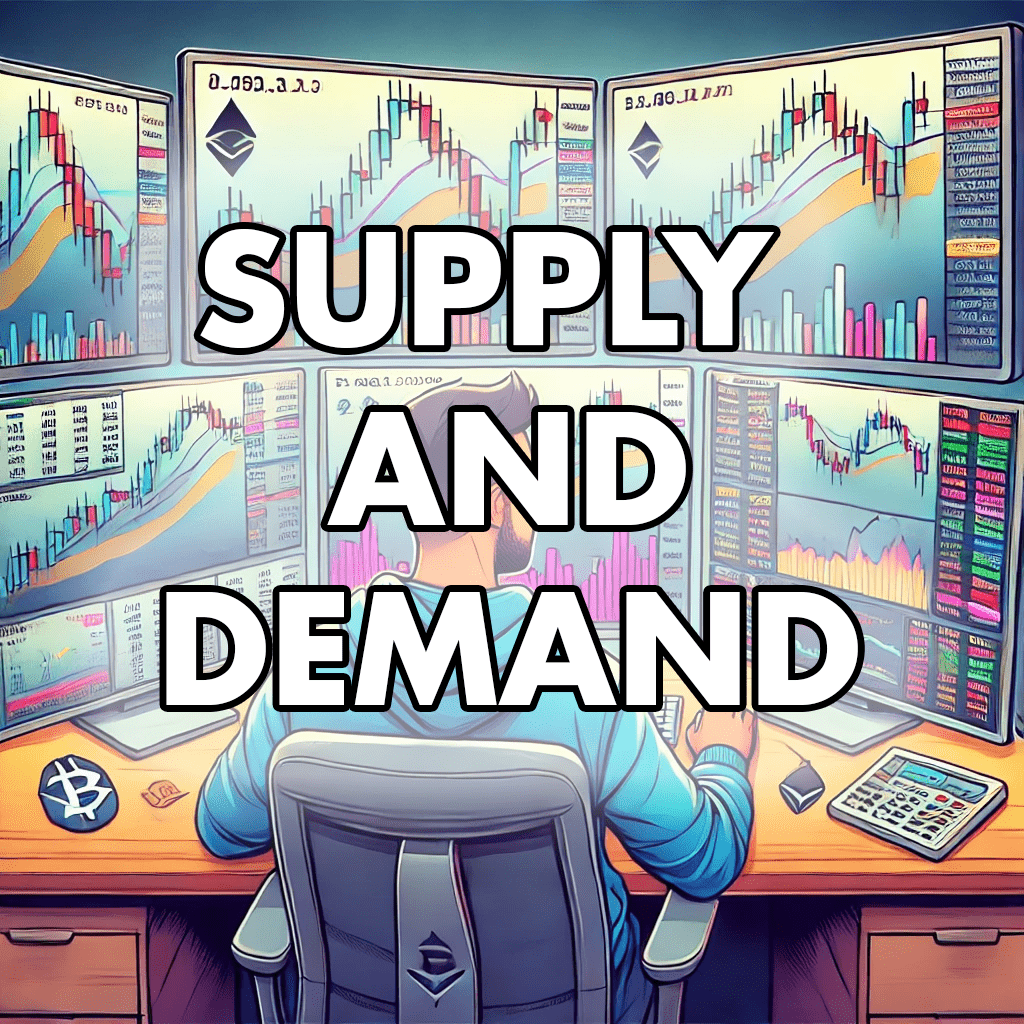Supply and Demand in Trading: Understanding the Core Concepts
Table of Contents
Toggle
What Is Supply and Demand in Trading?
In trading, supply and demand (SnD) represent the forces driving price movements. The concept revolves around the idea that price moves where there is an imbalance between buyers and sellers.
- Supply: Refers to areas where sellers dominate, causing price to drop.
- Demand: Refers to zones where buyers dominate, causing price to rise.
These zones, often marked on charts as supply and demand zones, highlight areas where significant market orders have been placed, offering traders high-probability setups.
Why Supply and Demand (SnD) Matters in Forex and Crypto
1. Universal Application
Whether you’re trading forex, crypto, or stocks, SnD zones are foundational. They provide a framework for understanding price action across all markets.
2. Precision in Trading
Identifying supply and demand zones allows traders to:
- Enter at optimal levels.
- Place stop-losses effectively.
- Target high-reward setups.
3. Alignment with Smart Money
SnD zones often align with institutional activity, as these areas are where large orders are executed. By focusing on SnD, traders can align their strategies with smart money flows.
How to Identify Supply and Demand Zones
1. Supply Zones
A supply zone forms when there is a sharp drop in price after a consolidation or small upward movement. This indicates an area where sellers overwhelmed buyers.
Characteristics of Supply Zones:
- Found near recent highs.
- Associated with rapid downward price moves.
- Often revisited before a continuation downward.
Example Strategy:
Wait for price to revisit a supply zone and look for bearish confirmation signals (e.g., wicks, engulfing candles).
2. Demand Zones
A demand zone forms when there is a strong rally in price after a period of consolidation or minor downward movement. This reflects a region where buyers outpaced sellers.
Characteristics of Demand Zones:
- Found near recent lows.
- Associated with sharp upward price moves.
- Likely to act as support during a pullback.
Example Strategy:
Enter long positions when price retraces to a demand zone and shows bullish confirmation signals.
Supply and Demand Strategies in Trading
1. Trading the Bounce
One common strategy involves waiting for price to return to a supply or demand zone and then trading the bounce.
Example:
- In Forex: Look for a demand zone on the EUR/USD pair and enter long after a bullish engulfing candle.
- In Crypto: Identify a supply zone in Bitcoin (BTC) and short after a bearish pin bar forms.
2. Breakout Strategies
When price breaks through a supply or demand zone, it often signals a continuation of the trend.
Example:
- In Forex: Enter a long trade when price breaks above a supply zone with volume confirmation.
- In Crypto: Short Ethereum (ETH) when price breaks below a demand zone during high volatility.
3. Combining SnD with Indicators
Pair SnD zones with tools like:
- RSI: To confirm overbought or oversold conditions.
- Moving Averages: To validate trends within SnD zones.
- Volume Profiles: To analyze activity near supply and demand levels.
Supply and Demand Trading Courses and Resources
1. R2F Trading Coaching Services
For personalized guidance, R2F Trading offers tailored coaching programs that focus on supply and demand concepts in forex and crypto trading.
Why Choose R2F Trading?
- 1-on-1 coaching with hands-on analysis of supply and demand zones.
- Strategies customized to your trading style and goals.
- Free discovery session to assess your needs.
Visit R2F Trading to start mastering SnD trading today.
2. ICT Mentorship Program
Michael Huddleston’s program dives deep into institutional trading concepts, including supply and demand zones.
Access:
Explore the ICT Official Website for more details.
3. Online Learning Platforms
- BabyPips: Beginner-friendly guides on price action and SnD basics.
- TradingView Ideas: Community-shared SnD setups for forex and crypto.
- YouTube Channels: Search for “Supply and Demand Trading Strategy” to find free tutorials.
Conclusion: Mastering Supply and Demand in Trading
Understanding supply and demand (SnD) is essential for anyone looking to succeed in forex, crypto, or any other financial market. These zones provide a clear framework for identifying key price levels, improving accuracy, and aligning your trades with institutional flows.
By incorporating such strategies into your trading, using the right tools, and seeking guidance through trusted resources like R2F Trading, you can elevate your skills and build confidence in your approach.
Start exploring these concepts today, and let supply and demand be the cornerstone of your trading strategy.
Private Coaching
If you’re ready to take your trading skills to the next level, book your free discovery session with me today! We’ll discuss your goals, assess your current trading strategy, and create a personalized plan to align you with the edge of trading like smart money.
